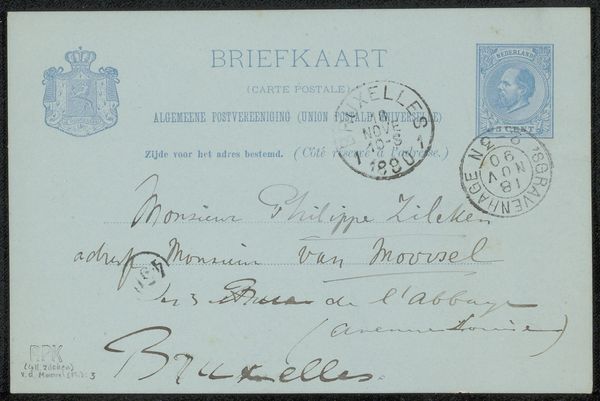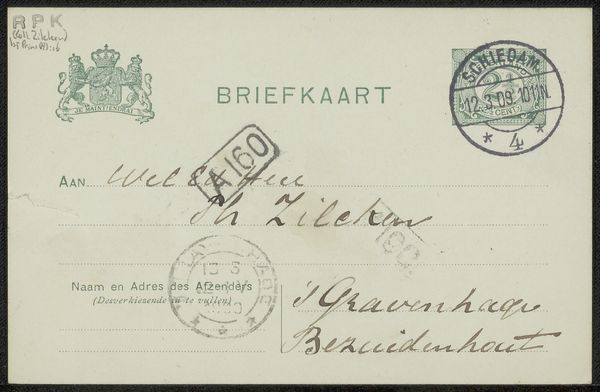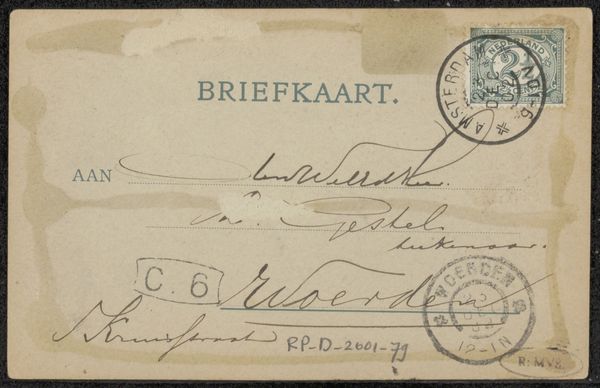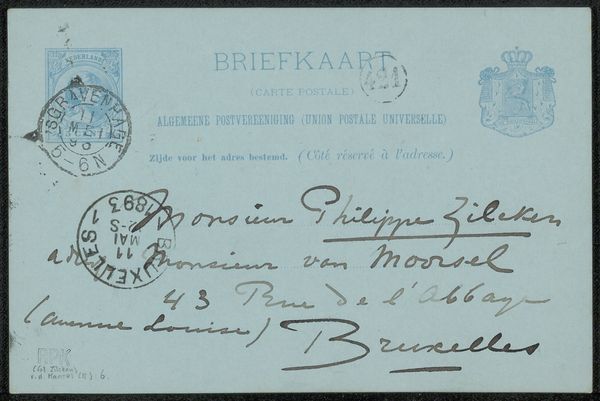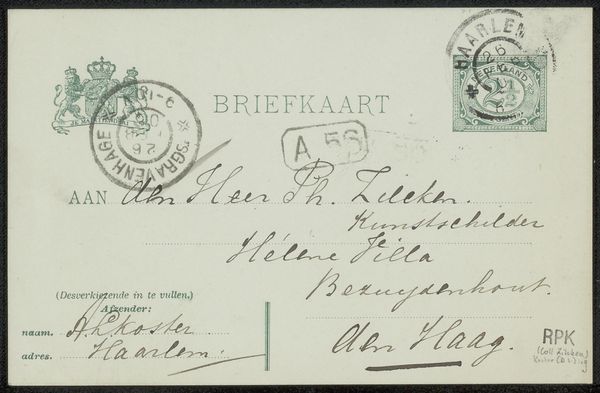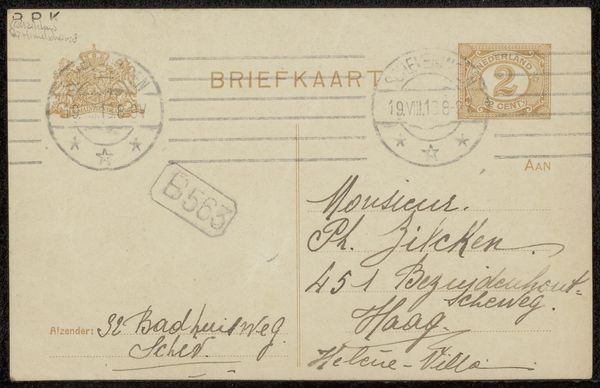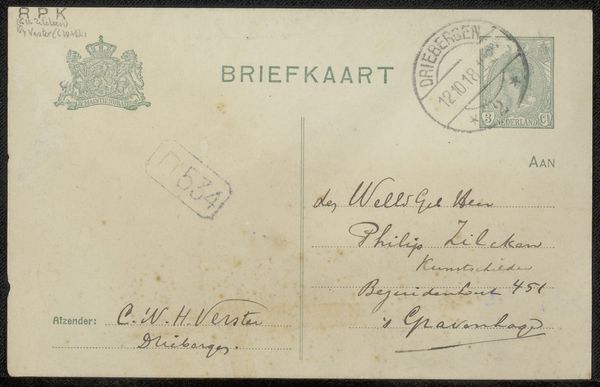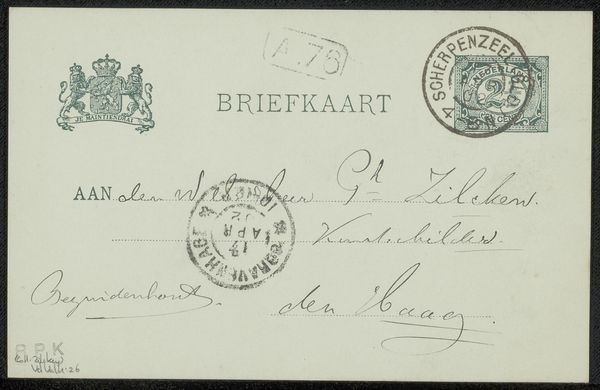
drawing, print, paper, ink
#
portrait
#
drawing
#
hand-lettering
# print
#
hand drawn type
#
hand lettering
#
paper
#
personal sketchbook
#
ink
#
hand-written
#
hand-drawn typeface
#
fading type
#
sketchbook drawing
#
post-impressionism
#
sketchbook art
#
miniature
#
calligraphy
#
small lettering
Copyright: Rijks Museum: Open Domain
Editor: Here we have a “Briefkaart aan Jan Veth,” possibly from 1890, by M.C. Lebret. It seems to be a postcard, primarily rendered in ink on paper. The fading type and hand-lettering create a sense of intimacy, but I'm curious, what stands out to you about this piece? Curator: I'm immediately drawn to the materiality and process involved. The postcard itself is a mass-produced object, a product of the postal system. But then look at the hand-written elements: the calligraphy addressing Jan Veth, juxtaposed with the printed text indicating the standardized postal regulations. This creates an interesting tension between industrial production and individual expression. Editor: So, it's the collision of those different modes of production that you find compelling? Curator: Exactly. How does the means of communication influence the message? A postcard implies a certain brevity and publicness; consider how that context shapes what Lebret might choose to communicate. Also, observe how the postal markings—the stamps and postmarks—accumulate on the surface. Each of those stamps signifies a transaction, a payment for services rendered by the postal labor force. Editor: That makes me think about the accessibility of art creation through this medium – cheap and readily available! Curator: Precisely. It challenges the traditional idea of art as something precious and removed from everyday life, placing value instead on process. The postcard, in its essence, underscores accessibility, blurring the distinction between ‘high art’ and more ordinary, utilitarian modes of material making. It makes one consider Lebret's own social positioning, engaging with industrial capitalism but creating highly crafted text. Editor: That is a really interesting way to think about it. I hadn't considered all the layers of production inherent in something so seemingly simple. Curator: Indeed. By examining the material history, the card opens new insights into both its maker and receiver's cultural landscape.
Comments
No comments
Be the first to comment and join the conversation on the ultimate creative platform.
